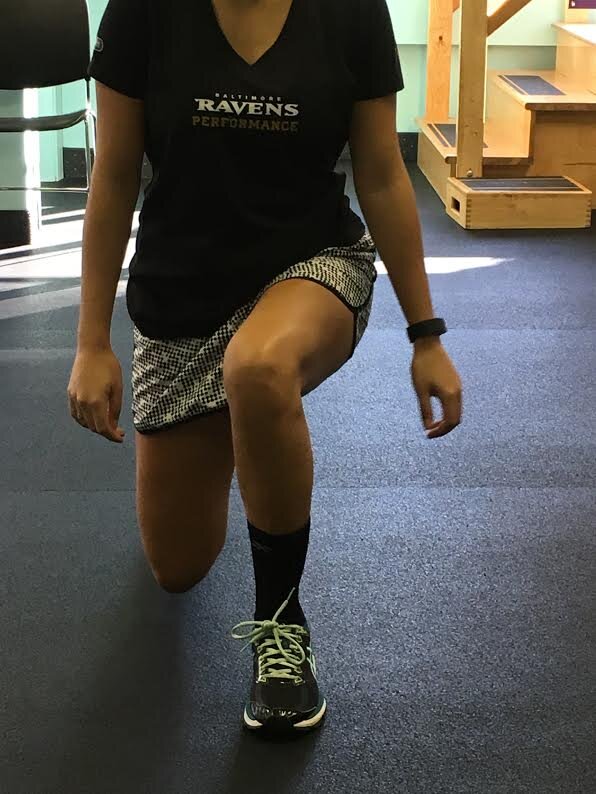7-Day Strength and Mobility Reboot [FREE guide].
If you are having a harder time exercising or performing your daily activities, I have good news and bad news.
The bad news is that these issues WILL NOT resolve on their own. They will just get worse if left unchecked.
The good news is that, in most case, you can not only alleviate but actually resolve the issue in question.
The strategies in the 7-Day Strength and Mobility Reboot Guide will help you move better, have less pain, and get back to doing things you thought you could no longer do.
The strategies are simple and easy to do and there is a minimal time commitment involved. To make these work, consistency is the key. Follow the plan to start feeling better.
If you describe your pain as “coming out of nowhere” or constantly state that, “I didn’t do anything” when describing your pain then you are in the right place.
There is a complex interplay between how muscles contract and how joints move. Tightness in a joint, trigger points (or knots) in muscles, old injuries and/or pain can all negatively impact your ability to move properly.
If abnormal movement is repeated for too long, it becomes “normal” to the brain and that is how you move even after your pain is gone.
Crazy, right?
Taking care of any joint or muscle restrictions is a necessary first step to getting you back to crushing life without worrying about what’s going to hurt later.
The strategies in the Reboot will not only work now but are movements you can repeat indefinitely to keep feeling amazing. And this is just the start.
You can be fit and still be in pain!
What I’m going to talk about next is going to sound like the cheese has slid off my cracker. It hasn’t. Just hear me out.
Eliminating pain in people that are fit can prove a bit more challenging than those that are more sedentary.
Say what?!
You see, people who are strong often try to power through whatever pain they have; assuming it will be just fine or they will get over it soon.
This mentality often brings on greater compensation with their movement and furthers the injury as the person continues to do the same thing while expecting a different outcome. This is, as most people know, the definition of insanity.
Think about this. If someone came to you and told you that every time they touched a hot surface they burned their hand, what would you tell them?
Hold it there longer and see if it gets better?! Of course not. You would tell them to stop being a dumbass and stop touching the hot surface. This makes sense because the connection is easy to see. If you remove the hand from the hot surface, it stops burning.
Sadly, a lot of “pain that comes out of nowhere'“ is full of lagging indicators. This means you can do things for a long time before they start to hurt.
How can this happen?
Blame your daily grind.
Most non-traumatic pain comes from repetitive movements (or static postures) and some form of faulty mechanics.
This could be spending too much time sitting down looking at a computer or in the car commuting to and from work. This creates stress and pressure in the spine, shoulder, and neck.
You probably look like this right now.
Maybe your knee collapses in towards the other knee every time you sit and stand, climb stairs or attempt certain exercises. This can create stress in the foot, ankle, knee, hip and even the low back.
For others, shoulder hiking (the shoulder blade moving up towards the ear) occurs when moving the hands above shoulder-height.
This is something that could happen if you reach into a cabinet at home, washing your hair in the shower or performing certain exercises during your workout.
We must address the faulty movement patterns in an attempt to reduce or eliminate irritation and pain. Just making you aware of what the body is doing goes a long way to correcting what goes on during each day.
Think about how long you sit each day. If you do nothing to address this, how can you get better?
How many times do you sit and stand each day? How many flights of stairs do you ascend and descend in a given day?
As you move through your day, start to pay attention to not just what you are doing but how you are doing it. This is a key step in helping you manage and resolve your pain.
Exercising with great technique is hugely important. But, it cannot compete with the volume of your daily activities. They, too, must be addressed to get you back to being pain-free.
Click below to grab your FREE guide.
7-Day Strength and Mobility Reboot
Until next time,
Dr. Tom



